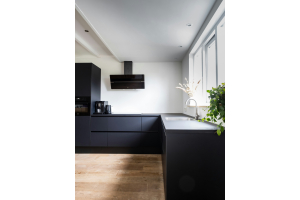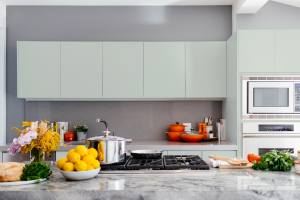In the world of kitchen renovations, the transformation of an old, dull kitchen into a vibrant, welcoming space begins with a simple task: stripping cabinet doors. Painted kitchen cabinet doors can be the source of a home’s character, and whether you're a homeowner dreaming of a domestic facelift, a house flipper aiming for profit, or a professional construction worker on the job, this article will help you safely and effectively strip those kitchen cabinet doors.
Why Strip Cabinet Doors?
Before diving into the ‘how,’ let's talk about the ‘why.’ Stripping cabinet doors is essential for removing old paint, varnish, or stains, so the surface is ready for a fresh finish. When you’re giving a home a new look, sometimes, it’s best to start from scratch.
A Change of Scenery
Are you tired of your kitchen and dreaming of a new look? Stripping your cabinets can be a satisfying weekend project that makes it feel like you moved into a new house. It's also cost-effective and gives you control over the process.
Maximize Your Investment
For those in the house flipping business, stripping cabinet doors is a skill that will always be useful. It’s a relatively low-cost way to significantly enhance the appeal of a property. Would-be homeowners gravitate to the kitchen, and ensuring it looks fresh and original can be a major selling point.
Quality is Key
The reputation of professional builders is built on quality and efficiency. Just as you should know how to hang cabinet doors for painting, stripping cabinet doors can save you money on materials and add value to every project you complete.
The Stripping Process: Step-by-Step
Now, let’s get to the heart of the matter. Here’s the step-by-step guide to stripping cabinet doors like a professional:
Safety First
Always wear protective gear–gloves, goggles, and a respirator mask are key for this project. Lay down material to protect your workspace, and ensure it is well-ventilated, as the chemicals used in stripping cabinets can be potent.
Remove the Doors
Carefully remove your cabinet doors and hardware. Make sure you label them to make reinstallation a breeze.
Choose Your Stripper
There are various types of strippers, from harsh chemicals to more environmentally friendly options. Consider the material of your cabinets and your preferences and choose accordingly.
Apply the Stripper
Following the manufacturer’s instructions, apply the stripper evenly. Patience is key–let it sit for the time the product recommends.
Scrape it Off
Once the stripper has done its job, gently scrape off the old finish. Use a plastic scraper to prevent scratches, especially when working with delicate wood.
Clean Up
Wipe down the doors with a cloth and mineral spirits to remove any residue. This step ensures a clean, smooth surface for the future finishes and helps protect your sander.
Sand for Perfection
Once the doors are dry, sand them lightly. This step is about creating the perfect base for painting or staining.
Finish
Now that your doors are stripped and prepped, they’re ready for painting, staining, or the perfect new finish that will transform your space. Now’s the time for you to decide if you should paint the cabinet hinges.
Tearing Down to Build Up
Stripping kitchen cabinet doors can be as rewarding as it is practical. When it’s done right, you can take something old and breathe new life into it.
If this sounds like too much work, remember that you can always consider buying new cabinets from sellers like 27estore that offer a wide range of beautiful cabinets ready to transform your home!





